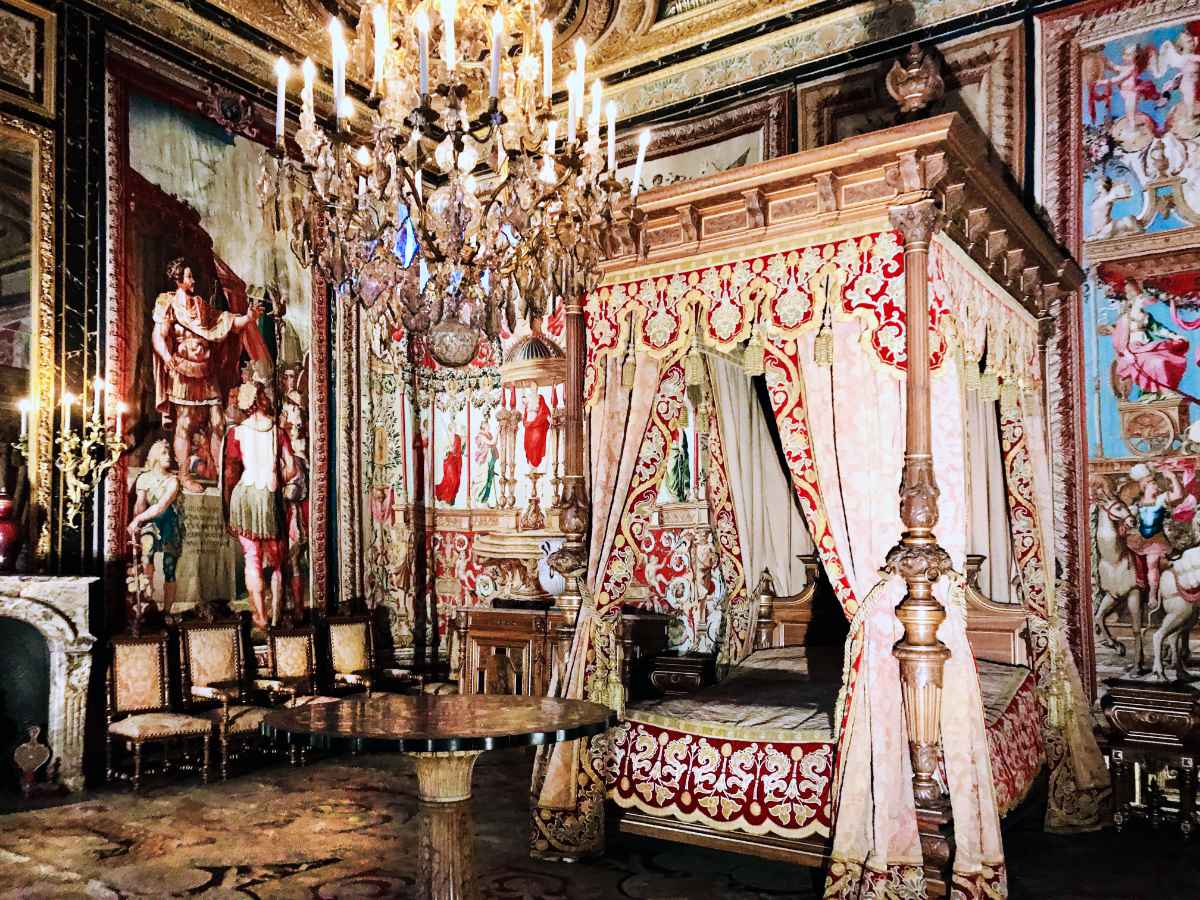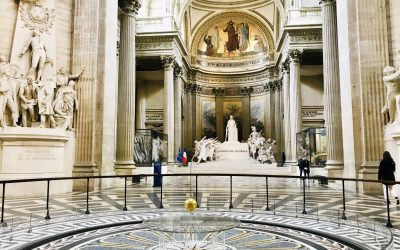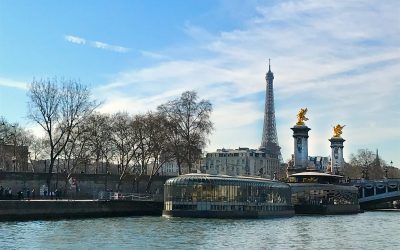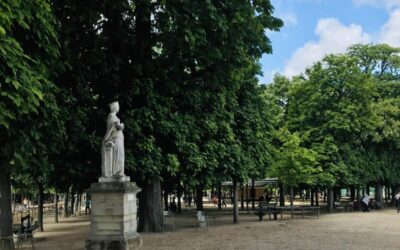The history of France is just as fascinating as it is long. Located in Western Europe, it shares a tumultuous and complex history with its neighbors, exchanging allies and enemicaes several times throughout the ages.
And with that comes its influence in events and moments in world history, as well as democratic principles and ideas, such as France’s Declaration of the Rights of Man and of the Citizen.
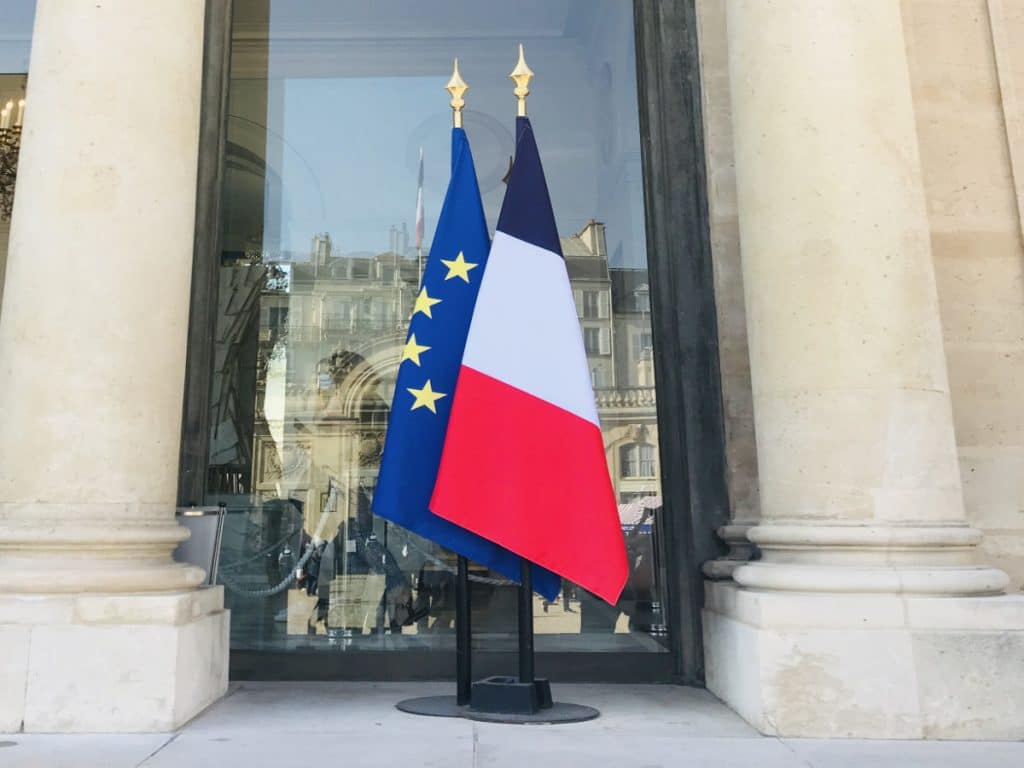
In fact, France is home to some of the most important moments in history, and was instrumental in the formation of the modern Western world order.
It is these incidents that have shaped French culture and been a great source of inspiration for the country’s many poets, writers, artists and musicians.
And it has also made French one of the most spoken languages in the world. So with that, here are some fun facts about French history. Allons-y!
- 1. The land was settled by the Celtic Gaul tribes.
- 2. Marseille is the oldest city in France.
- 3. French cities formed under the Roman Empire.
- 4. Saint Genevieve becomes Paris's protectrice.
- 5. Clovis became the first King of the Franks.
- 6. Holy Roman Emperor Charlemagne ruled over much of France and Germany.
- 7. The Plantagenets set the stage for claiming the throne of France.
- 8. The Catholic Popes moved to Avignon
- 9. Knights Templar were destroyed by French King Philip le Bel.
- 10. The Bubonic Plague strikes France.
- 11. France and England, and the 100 Years War
- 12. Jeanne d'Arc tries to lead the French.
- 13. There were other languages than French in France.
- 14. Christmas trees became popular in Alsace.
- 15. Catholics and Protestants fought each other.
- 16. French explorers went to the Americas.
- 17. Sun King Louis XIV built the Palace of Versailles.
- 18. King Louis XVI and Marie Antoinette were bankrupting the country.
- 19. The French Revolution led many to the guillotine.
- 20. A new Motto and National Anthem was written.
- 21. Napoleon Bonaparte declared himself Emperor.
- 22. Human trade was a big issue.
- 23. France had multiple revolutions and republics.
- 24. French soldiers settled many colonies around the world.
- 25. A Frenchman created the Olympics.
- 26. The Franco-Prussian (German) war of 1870 ended in defeat.
- 27. France under attack in World War I.
- 28. Paris was occupied during World War II.
- 29. France was a founding member of the European Union.
- 30. Loss of colonies and violent social protests.
- 31. The Euro replaced the Franc as legal currency.
1. The land was settled by the Celtic Gaul tribes.
Written records show that the original settlements dating back to the Iron Age in France, were tribes speaking Gaelic. The Gauls were the largest and best attested group, that were part of Celtic tribes all across the Isles and Western Europe from before the time of the Roman Empire.
(The Region of Brittany still vaunts their Celtic connections today, with their language Breton and a black and white flag that is called the Gwenn-ha-Du.)
Celebrations like Halloween and All Saints’ day date back to the pagan traditions of Samhaim celebrated by the Gauls. Over the course of the 1st millennia, the Gauls would be invaded by the Greeks, the Romans, the Franks, and more.
Old France is still referred to as “Gaul”. For example, the name Charles de Gaulle literally translates to “Charles of Gaul”.
2. Marseille is the oldest city in France.
Marseille is the oldest city in France, and today the 2nd largest. It was founded in 600 BC as the Greek colony of Massalia. Its strategic location on the Mediterranean sea made it an important trading port and access point for the Greeks and Roman Empire.
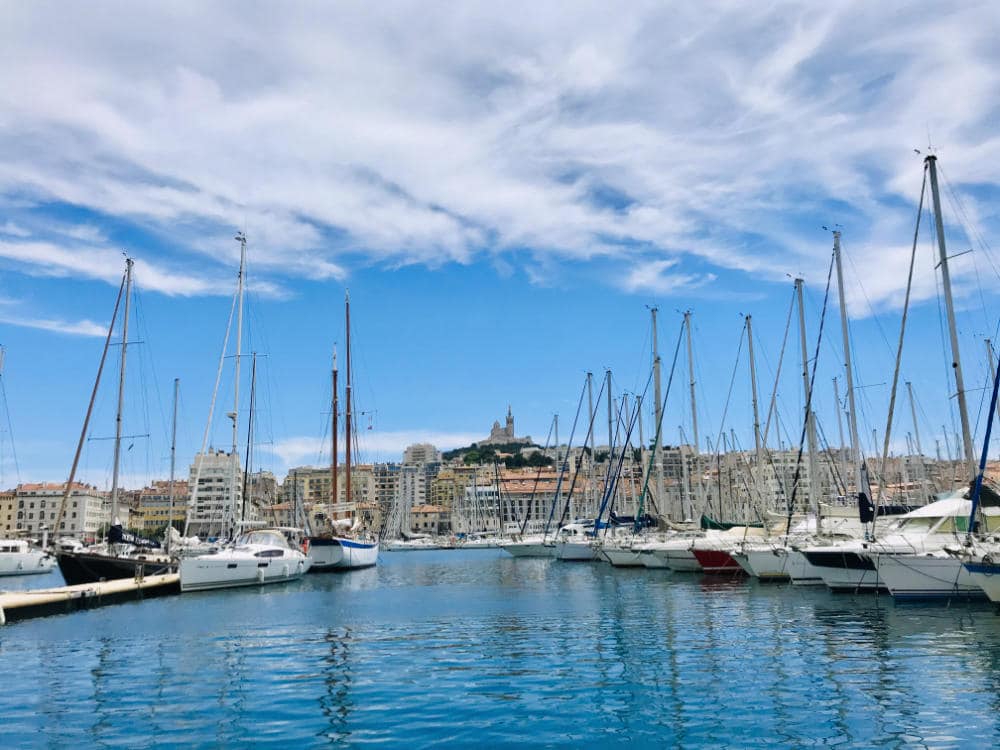
3. French cities formed under the Roman Empire.
The Gauls were invaded by Greeks, who in turn were invaded by the Roman Empire from the 1st century BC to the 5th century AD. (The comic books Asterix and Obelix centers around the intrepid Gauls fighting the dastardly Romans.)
The Roman capital in Western Europe at the time was Lugdunum, which today is the city of Lyon. In addition, cities in Provence like Nimes and Arles where where it was at, for the Romans. (If you are in the South of France, don’t forget to visit the famous Pont du Gard aqueduct built by the Romans to carry around 8 million imperial gallons of water per day.)
And Paris? Paris at the time was just a tiny outpost in the north. Only the portion that today is called Ile de la Cité in Paris was inhabited (the darkest green in the map below).
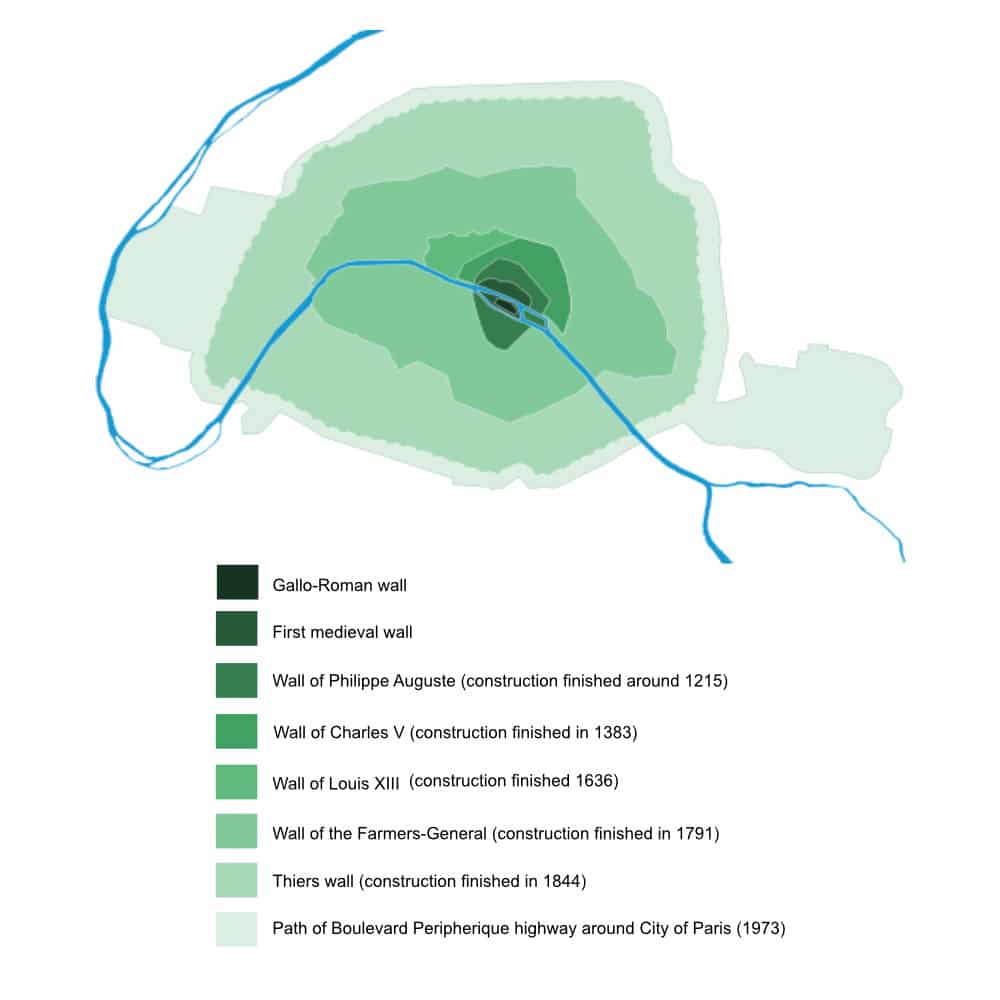
Known as Lutèce, it gradually grew into the Paris we know today. You can read more about Paris’s history here.
4. Saint Genevieve becomes Paris’s protectrice.
By the 5th century, Roman empire was gradually decreasing in influence due to the increasing Frankish invasions (a Germanic tribe). At the time, lived an ordinary woman from Nanterre, called Saint Genevieve who saw God and became a nun at 15. She would slowly become renowned for her piety and her visions.
In 451 AD, the city was threatened by the army of Attila the Hun, which had pillaged Treves, Metz and Reims. Parisians were planning to abandon the city, but they were persuaded to resist by Geneviève who led a prayer-marathon to divert the Hun army.
When the Huns diverted to Orléans instead, Geneviève was proclaimed a heroine. During subsequent attacks and sieges, it was Geneviève who would negotiate between the armies, looking out for the people of Paris.
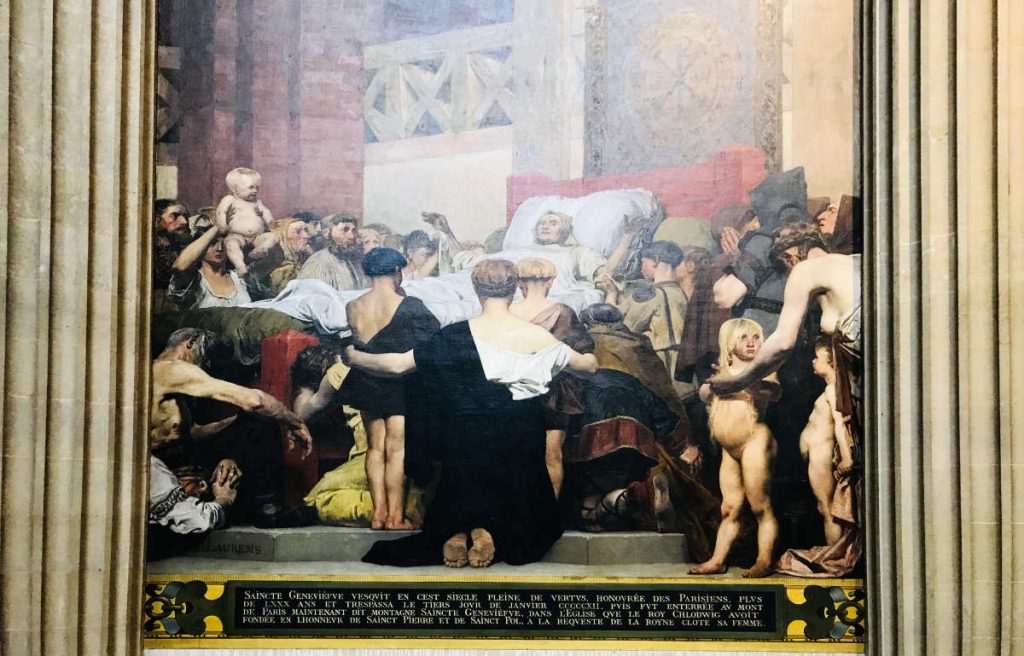
She would go on to counsel Clovis, the first King of France to convert to Christianity and make Paris his base. Cannonized after her death, Saint Genevieve is even today considered the protectrice and patron saint of Paris.
The Panthéon in Paris was originally intended to be a temple dedicated to her. You can read more about the history of Paris here.
5. Clovis became the first King of the Franks.
After the fall of the Roman Empire came a Germanic tribe named the Franks. They defeated the Gauls across much of the country (although a strong gaellic presence remains in Bretagne.) The country France is named after the Franks.
Clovis I was the first king of the Franks to unite all of the Frankish tribes under one ruler in 481 AD. He conquered the nearby Kingdom of Soissons, which was previously a capital. Clovis ensured that the monarchy was passed down to his heirs, as part of the Merovingian dynasty in France.
Legend has it that Mary Magdalene had arrived in Provence, bringing Christianity to France. By the time Clovis became King, people in that era were starting to believe in Christ.
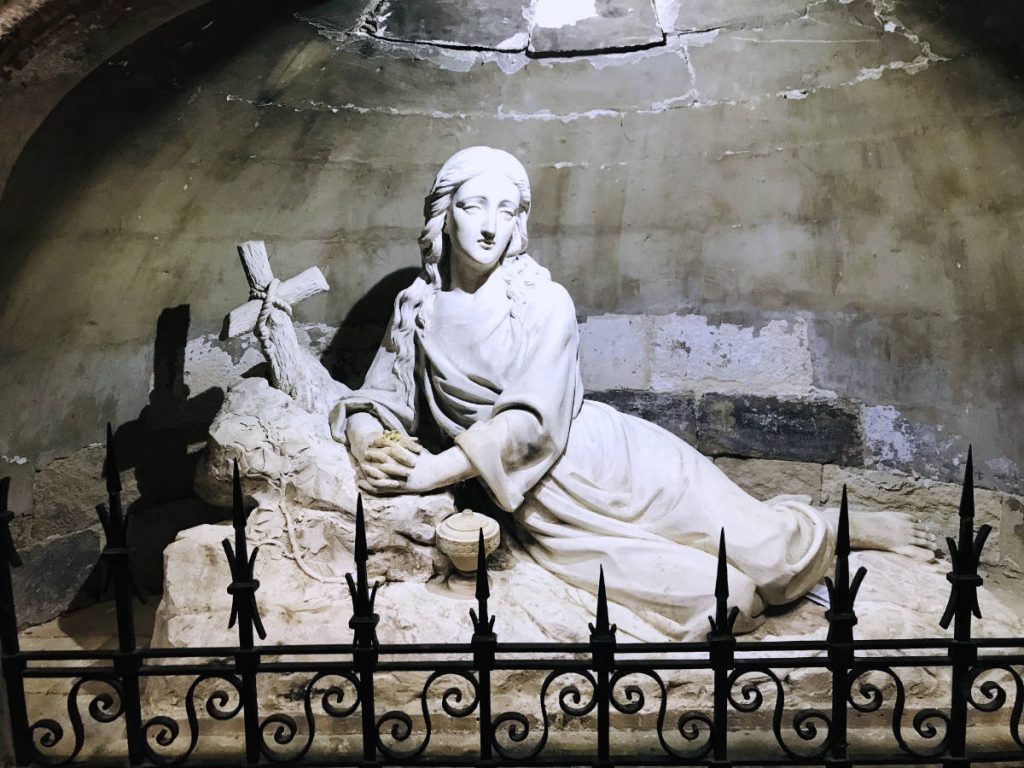
Clovis is the first French King who converted to Christianity on the urging of Genevieve and his wife Clothilde (who is also proclaimed a saint for this act). It is Clovis I who establishes Paris his capital in 508AD, because of its strategic position on the River Seine.
This was the center for the Frankish kings, eventually settling outwards in the Ile-de-France.
6. Holy Roman Emperor Charlemagne ruled over much of France and Germany.
A century after Clovis, came a new King of the Franks named Charlemagne. They say that every European is related to King Charlemagne. (He had at least 18 children, so it is possible).
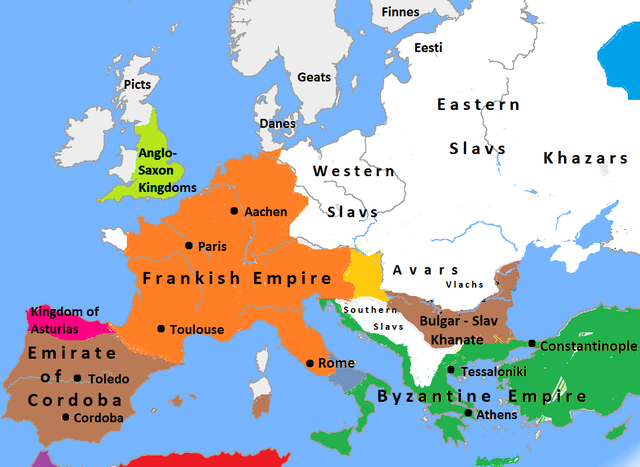
By 768 AD, Charlemagne had conquered almost the entirety of the area known today as France and Germany. But upon his passing, his sons started squabbling, arguing over the region of Alsace and many other disputed lands in the middle.
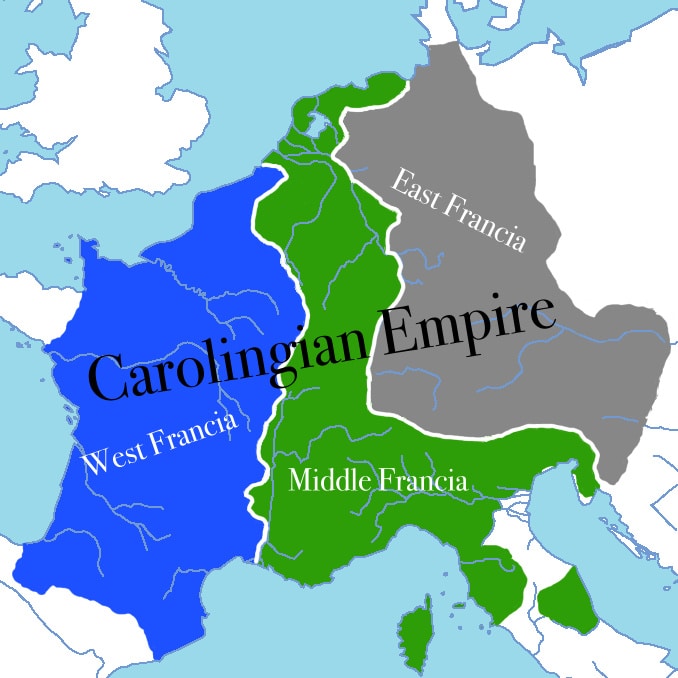
This was not the first of the Franco-Germanic wars, and it would not be the last. The country of France is named after the tribe of the Franks, forming a part of the new Frankish empire.
You can read more about Charlemagne and his descendants warring over here.
7. The Plantagenets set the stage for claiming the throne of France.
For French people, William the Conqueror who conquered England in 1066, is French! Duc Guillaume of the Duchy of Normandy went across the English Channel from the west coast of France. He went to England leaving his wife and 9 children behind in Normandy, as he fought and solidified his hold on England.
William didn’t speak much English, so the language of the (English) court was French, a tradition that his descendants continued for centuries. As such, approximately 45% of words in English are rooted in French.
Many of William’s descendants continued to speak French rather than English, with the motto of the English monarch becoming:
Dieu et mon droit
French-English translation: God and my right
William’s descendants would go to intermarry for several generations with the French royal house, leading to many conflicts as they each tried to assert their rights to the other’s throne.
In addition, the former Queen of France, Eleanor of Aquitaine, the Duchess of Aquitaine would have her marriage to the French King Louis VII dissolved for not providing him any sons.
To consolidate her position, this former Queen of France arranged in 1152 to marry English King Henry II, with whom she had 5 sons and 3 daughters. The Duchies of Normandy and Aquitaine were now under English control.
You can read more fun quotes about the rivalry between the British and French here.
8. The Catholic Popes moved to Avignon
Known as the Avignon papacy, 7 Catholic popes resided in Avignon for a period of 73 years in the 13th century, building castles and fortresses and bringing much wealth in the area.
The Popes even established the famous Châteauneuf-du-Pape wine in the area, one of the French wines that is known worldwide today.
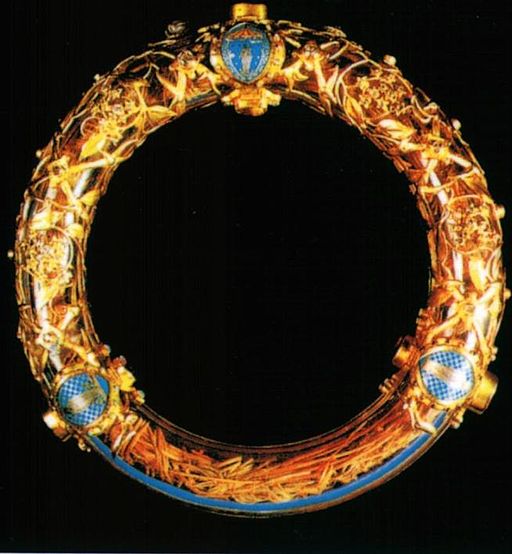
9. Knights Templar were destroyed by French King Philip le Bel.
It is the late 13th century and the crusades to the Middle East are in full force. A group of crusaders-for-hire known as the Order of the Knights Templar, with their distinctive white mantles with a red cross, were amongst the most skilled fighters of the Crusades.
But they were expensive. They also had a side-hustle banking, managing a large economic and financial system across the Christendom,
On the French throne is Philippe le Bel (Philippe IV or Philippe the Fair), who is one of the most powerful rulers on the continent, who just happens to be deeply in debt to the Knights Templar.
With his grandfather, Saint King Louis, dying in the crusades and earning a sainthood for bringing back the Crown of Thorns to France from Constantinople (today known as Turkey), Philippe le Bel feels the urge to show that he too is committed to the cause of the crusades.
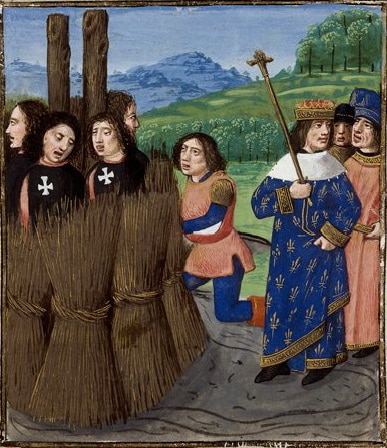
The French King, Philipe le Bel, decides to round them all up, tortures them, and burns their leader Jacques de Molay at the stake. He seizes all their lands and their money, and becomes more powerful than ever.
Jacques de Molay and the Knights Templar would get their revenge however. Cursing Philippe le Bel from the stake, the French King soon dies, as do all his 3 sons and direct male descendants.
10. The Bubonic Plague strikes France.
The 14th century was not kind to Paris or France. The country was struck by two great catastrophes: the Bubonic plague and the Hundred Years’ War against the English.
During the recurring plagues, 40-50,000 people died in Paris alone, almost a quarter of the population.
11. France and England, and the 100 Years War
Philippe le Bel is dead, as are all his sons, and his only daughter Isabella was married to the English King. The French throne is now up for grabs.
While women generally couldn’t inherit due to salic law, Isabella claimed the French throne for her son King Edward III of England. The French nobles, on the other hand, wanted to award the French kingdom to a cousin of the old French King.
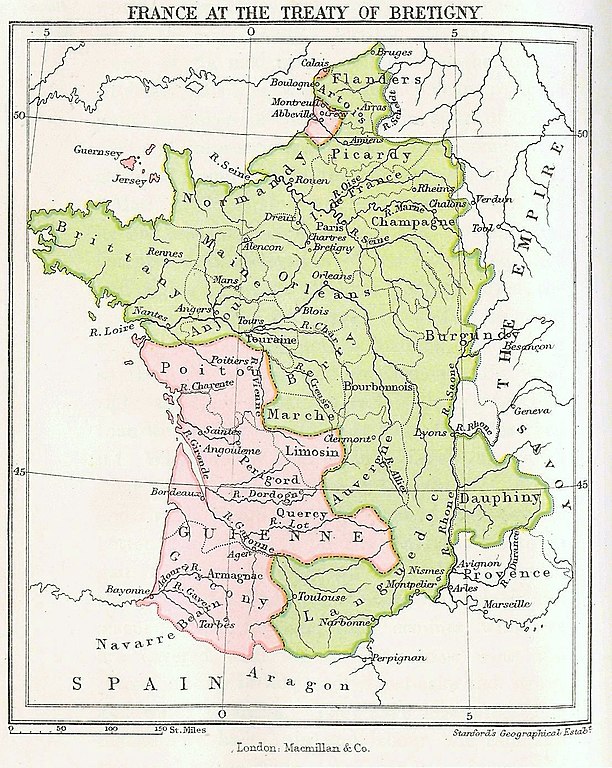
At the time, France’s borders were not the same ones that we see today. Portions of Aquitaine, Normandy, and Burgundy were already part of England due to intermarriage, inheritances, and armed conflict.
The dispute would not be resolved quickly. Known as the 100 years’ war, the war actually lasted from 1337 to 1453, with 5 generations of French and English kings competing over the French throne.
12. Jeanne d’Arc tries to lead the French.
In the midst of the 100 years’ war, a young maid named Jeanne d’Arc (Joan of Arc) would capture the imagination of France. Born to a relatively poor family, the young girl said that she received visions of the archangel Michael instructing her to support the French King Charles VII from the English.
Nicknamed la Pucelle d’Orléans (the maid from Orléans), she arrived in the French court at 17 years-old, dressed as a male soldier and made a strong impression on the King, whose armies were rapidly weakening.
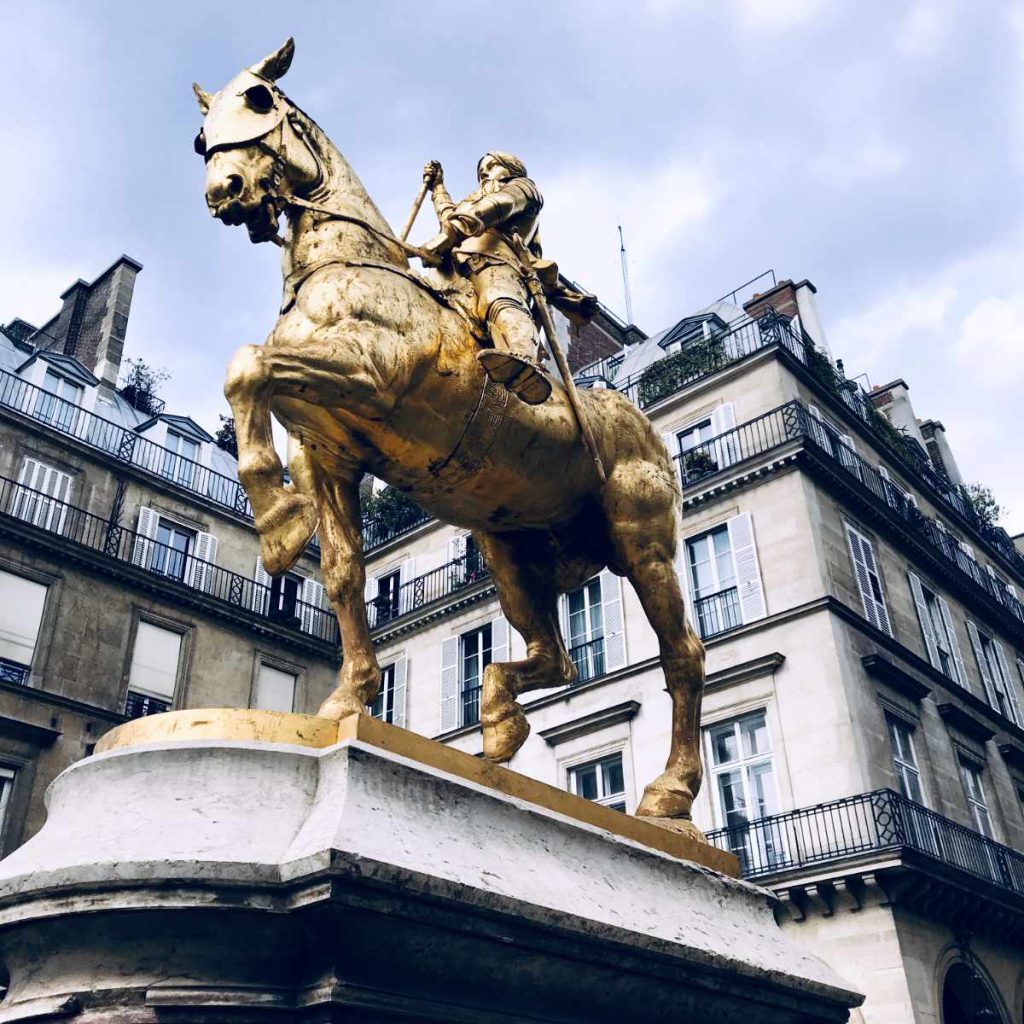
The French King sent Joan on a series of battles, along with the Scots with whom the French had formed the Auld Alliance. A deeply religious woman, Joan was able to lead the French army to victory, with her appearance effectively turned the war over territory into a religious war.
On 23 May 1430, she was captured in Compiègne in the North of France by a group of French nobles from Burgundy, who were allied with the English. She put on trial by the pro-English bishop Pierre Cauchon on a variety of charges, including cross-dressing and heresy. After being declared guilty, she was burned at the stake on 30 May 1431 in Rouen, dying at about 19 years-old.
She was declared a martyr, and in the 18th century made a symbol of France by Napoleon Bonaparte. In the 20th century, she was canonized by the Roman Catholic Church and made one of the patron saint of France.
Her legacy however, has been usurped by the ultra-right movement today in France. You can read more other famous French people throughout history here.
13. There were other languages than French in France.
The English may have been learning to speak French, but at the time not all the people in France did. At the time, people spoke the language of their region.
| Regional Languages in France | Spoken in |
|---|---|
| Alsacien | Alsace |
| Arpitan | Near Switzerland and Italy, including Rhône Alps |
| Basque | Near Spain (known as Basque Country) |
| Breton | in Brittany |
| Catalan | Near Spain (Known as Catalan) |
| Corse | Island of Corsica |
| Flamand | North of France, including Dunkerque |
| Francique Lorrain | Near Luxembourg, including Moselle |
| Occitan & Provençal | South of France, including Marseille |
However, in 1539, French King François I banned the use of most of these regional languages and insisted on a new language he called “françoys” be used for all official purposes. (Do we doubt that the name bears a strong resemblance to his own name?)

Today, there is still some resistance, however. Alsatian, Corse, and Breton are still taught in French schools in those regions, and the metro in the city of Toulouse is officially bilingual in French and Occitan.
14. Christmas trees became popular in Alsace.
The tradition of decorating Christmas trees started in Alsace Lorraine region of France. In the middle ages, a local apple known as the Christapfel (Christ’s apple) grown in Alsace, used to be used to decorate trees at Christmas.

The story goes that a drought in 1858 destroyed the apple harvest, prompting a local glass blower in nearby Goetzenbruck in North East France (on the German border) to create apple-shaped glass baubles, and hang those on the trees instead.
This tradition was quickly adopted around Europe, and that glass blower factory in Goetzenbruck still stands today.
15. Catholics and Protestants fought each other.
While the wars between France and England may have started off being over bloodlines and thrones, they eventually melded into wars over religion.
By the early 16th century, on the west of France, England had broken away from the Roman Catholic Church under the English Henry VIII (of 6 wives fame), to form the Church of England.
In the east in Germany, a monk named Martin Luther had started the movement that became known as Protestants (Lutherans). And in the South of France, was another group of protestants known as the Huguenots.
As you can imagine, this led to an awful lot of wars and massacres. In addition, a problem was on the horizon. With all the male heirs of the French King dead, it was his daughter Marguerite and her husband Henri of Navarre who was were in line to the throne.
Henri is protestant, and marrying Catholic Marguerite would lead to one of the most brutal massacres in French history (which may or may not have been organized by his own mother-in-law Catherine de Medici). Called the St. Bartholomew’s day massacre, it took place in Paris directly outside the Louvre Palace a couple of days their wedding.
With the bride and groom staying at the Palais du Louvre, both Protestants Huguenots and Catholics had descended on Paris to be present at the marriage.

Alarmed that Protestant Henri was now in line to the throne of France, the Parisians would turn on 3,000 huguenots gathered. By some estimates, between 10-50,000 people would be killed all across France during the St. Bartholomew’s day massacre.
After a long and unsuccessful siege laid around Paris by Henri, he gave up. The fighting ended (temporarily) as he agreed to convert to Catholicism, saying:
“Paris vaut bien une messe“
French-English translation: Paris is worth a mess.
He did however sign the “Edict of Nantes”, giving Protestants the freedom of conscience to pray as they wished. You can read more about Henri IV and the French royals here.
16. French explorers went to the Americas.
In 1534, a Frenchman named Jacques Cartier set off from Saint-Malo on the west coast of France to discover a western passage to the wealthy markets of Asia.
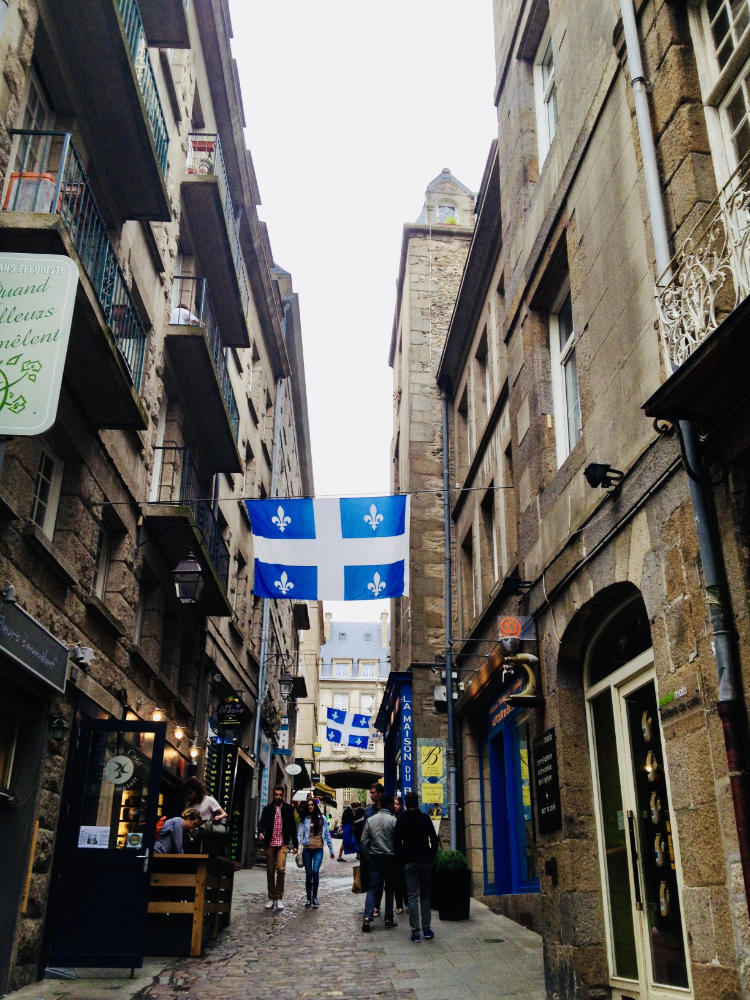
It was the start of the French invasion and settlement of lands in the Americas, from Louisiana, Quebec, eastern Canada, Haiti, the Caribbean islands, and much more.
Bringing in slaves in from Africa, French soldiers settled on these lands, while attempting to hold off the British, Spanish, and Dutch. You can read more about famous French explorers here.
17. Sun King Louis XIV built the Palace of Versailles.
King Henri IV’s grandson Sun King Louis XIV becomes King at the age of 4. It was a tumultuous time known as the Fronde, with nobles at the time contesting his mother Anne, who acted as Regent.
At one point, the 12-year old Louis and his mother were held prisoner at Palais Royal in Paris (the palace next to the Louvre) until they conceded to the demands of the frondeurs.
This made Louis detest and distrust Paris. When young Louis reached his majority, he immediately looked for a new power base instead of the Louvre, and settled on the family’s old hunting lodge: Versailles which was a couple of hours away from Paris by horse.
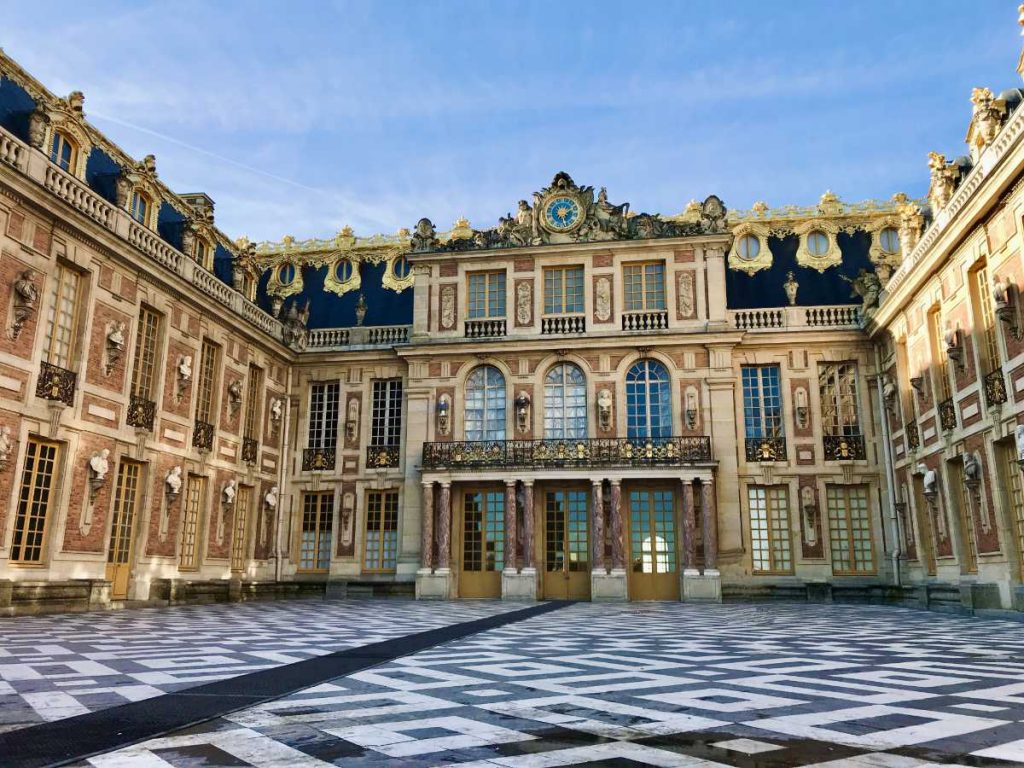
Louis XIV set about on a grand construction project (where many workers died) to build what we know today as the Palace of Versailles.
It was here that he came up with a strict dress code, detailed etiquette rules, and all sorts of other dictatures, so that he could immediately spot who was taking him seriously and who was not.
The Sun King Louis XIV ruled for over 72 years and is the longest recorded of any monarch of a sovereign country in European history.
18. King Louis XVI and Marie Antoinette were bankrupting the country.
Versailles was the capital of elegance by the time Austrian Marie-Antoinette married his great-great grandson Louis XVI, more than 200 years later. But France was slowly going bankrupt.
And the 16-year-old Marie-Antoinette was desperately homesick. Adding to her misery, her husband took 7 years to consummate the marriage and give her a child.
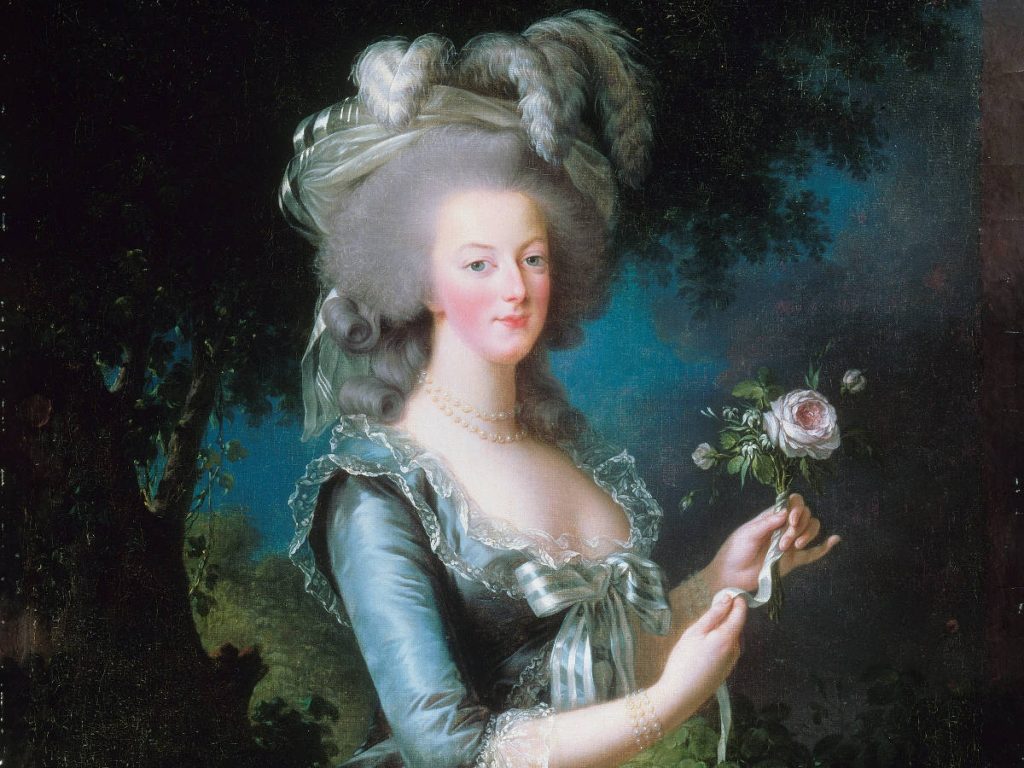
King Louis XVI spent a lot of money helping the American Revolutionaries fight their mutual arch-enemy, the English. To pay for it all, he tried to impose even more taxes on the poor to raise money.
It would not end well, as the people blamed him and his “foreign spendthrift” wife for the ills of the country. You can read more about Marie-Antoinette and her family here.
19. The French Revolution led many to the guillotine.
On 14 July 1789, the people marched and overran an ancient fort, called La Bastille, that housed a prison on the east side of Paris. The storming of the Bastille would signal the start of the French Revolution.
On 5 October 1789, the French people marched to Versailles, and made the Royal Family return to Paris as their prisoners. Louis XVI, Marie-Antoinette, and their children would never return.
The period after became knows as La Terreur when over 25,000 were massacred, sentenced to death, or underwent “street justice”, including several members of the Royal court.
The King and Queen Marie-Antoinette were also beheaded at Place de la Concorde in Paris in 1793. Their heads were shown to the crowd, who responded by crying: “Vive la République!”
Their 10-year-old son (Louis XVII) disappeared and no trace remains of what happened to him. Their elder daughter fared a bit better and survived the Revolution to the ripe old age of 70. But she was so traumatized, she never had children.
☞ READ MORE: French Revolution walking tour of Paris
20. A new Motto and National Anthem was written.
The period after the 1st French revolution gave the country their national anthem “La Marseillaise” and also their motto:
Liberté, égalité, fraternité
French for “liberty, equality, fraternity”
It also gave France their Déclaration des droits de l’homme et du citoyen (Declaration of the Rights of Man and of the Citizen), based on the American Declaration of Independence and Bill of Rights.
The French document was drafted by the Marquis de Lafayette (of U.S. Revolutionary fame), in consultation with American Thomas Jefferson.
Not all positive things came out of the revolution. It was also the moment when France tried to change time itself, by creating a new revolutionary calendar with 3 weeks in a month, 10 days in a week, and 10 hours in a day. As you can imagine, it did not work out.
21. Napoleon Bonaparte declared himself Emperor.
The French Revolution may have been in 1789, but just a few short years later, would fall back into a monarchy, or rather an empire.
Born in Corsica to a minor Italian noble family, a man named Napoleon Bonaparte rose quickly through the ranks of the French Army. By 1799, he is elected First Consul of the Republique and by 1804, Napoleon was “voted” Emperor.
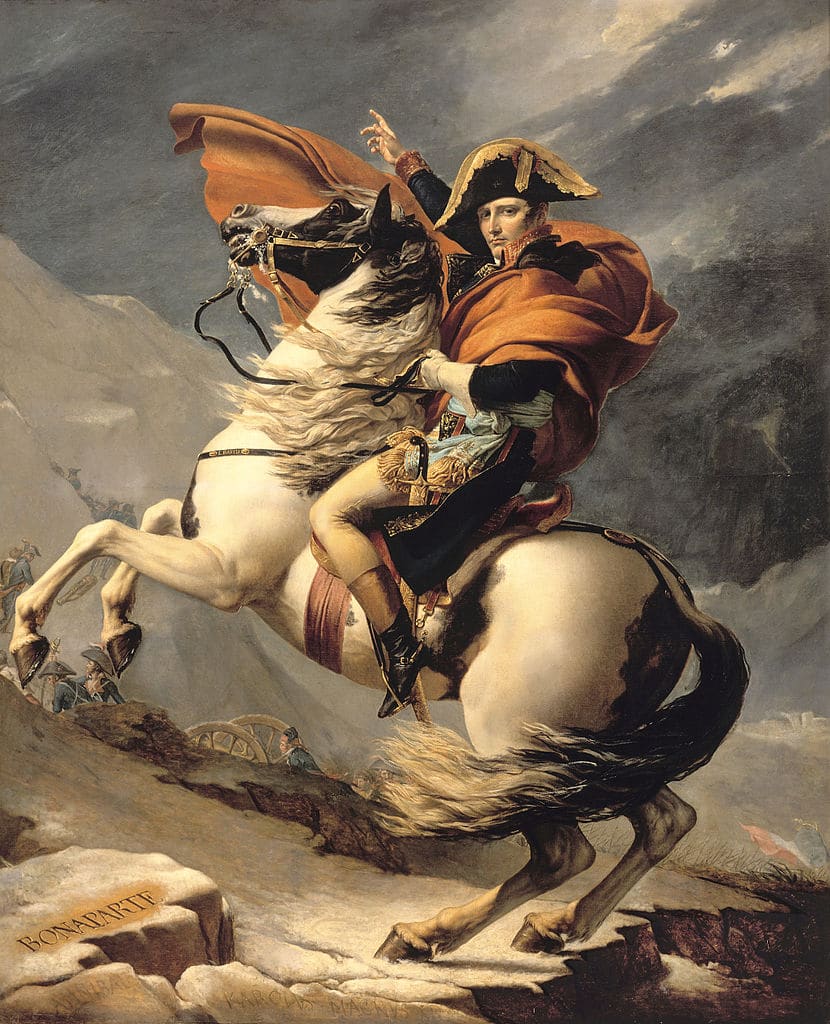
Napoleon was not content however, just being the Emperor of France. He went on to traverse the Alps annexing cities in the Duchy of Savoy like Nice, and pillaging through large parts of Italy, Austria, Egypt, and other parts of Europe and Africa.
After a disastrous campaign in Russia, he retreated back to France with a much depleted army and found himself overrun by the British. Signing his surrender at the Palais Elysées, he was exiled to the island of Elba. A few months later, he escaped and made a dramatic comeback to Paris.
It was not to be however. Finally defeated at the Battle of Waterloo, again by the British and her allies, he was exiled to the island of Saint Helena in 1821 which is where he died.
22. Human trade was a big issue.
Slavery was first abolished by the French Revolutionaries in 1794 as part of their quest for equality, but Napoleon Bonaparte revoked that decree in 1802.
After the French monarchy was restored, the French army was still relatively weak in terms of being able to fight for its territories in the Americas. A slave revolt took place in Haiti, where the people there fought for their freedom.
In 1825, the France decreed that it would recognize Haitian independence but only at the price of 150 million francs – or 10 times the amount the U.S. had paid for the Louisiana territory. The sum was meant to compensate the French colonists for their lost revenues from slavery.
With the threat of war looming, the Haitians agreed to pay, dooming their country to poverty. The debt was finally paid off in 1947. Later French presidents have admitted the cruelty of this debt, although have refused to recompensate Haiti.
23. France had multiple revolutions and republics.
The years after the 1789 revolution have not been smooth sailing. There have been 2 empires, yet another couple of revolutions, 2 constitutional monarchies, and 5 republics.
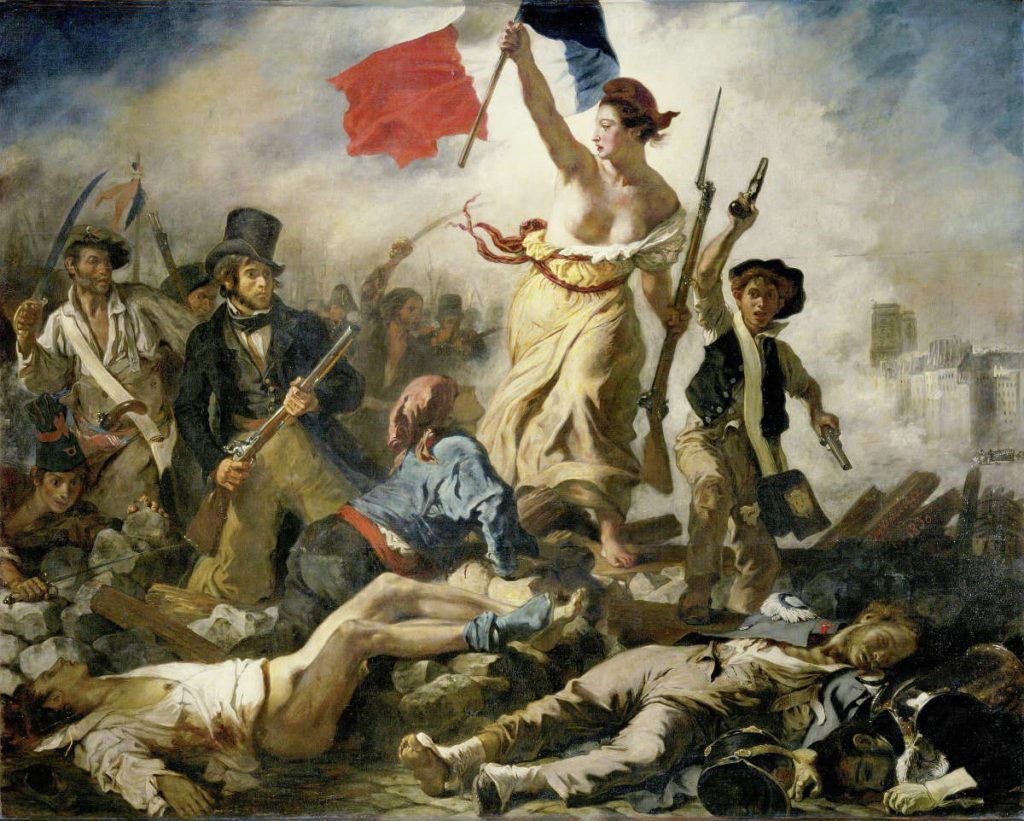
This enormous upheaval in the French history of government breaks down as follows:
- 1789: Storming of the Bastille and French Revolution
- 1792 – 1804: First Republic
- 1804 Napoleon Bonaparte proclaimed Emperor
- 1814: Restoration of Bourbon monarchy (descendants of King Louis XVI)
- 1830: July Revolution and establishment of constitutional monarchy
- 1848 Revolution: Napoleon III elected French President of 2nd Republic
- 1852: Coup d’état with Napoleon III declaring himself Emperor
- 1870: French defeat in Franco-Prussian War, and monarchy abolished
- 1870 – 1940: 3rd Republic (including WWI)
- 1940 – 1945: Vichy Government (under German occupation WWII)
- 1946 – 1958: 4th Republic
- 1958 – present: 5th Republic
However, 14 Juillet or Bastille day in 1789 is the revolution that everyone remembers and celebrates.
24. French soldiers settled many colonies around the world.
While they French may lost the territories in Canada and French Louisiana, and portions of India by the early 19th century after the defeat of Napoleon Bonaparte but they went on to constitute a new empire.
France rebuilt a new empire in the latter half of the 19th century, concentrating chiefly in Africa and Indochine (Vietnam and portions of Cambodia).
At its peak, in the period between the two world wars (1919 and 1939), the French colonies extended over 4.4m sq. miles (11.5m km²) of land, or 8.6% of the world’s land area.
After the end of WWII, France like the U.K., did not have the resources to maintain a military and governmental presence in their colonies and were forced to withdraw.
Nonetheless geographically, the country of France still today includes several overseas territories as a testament to its colonial past.
25. A Frenchman created the Olympics.
The father of the modern Olympic movement was a French man named Baron Pierre de Coubertin. Born to an aristocratic family, he became interested in physical education and the ideals of sport.
In 1894, in the halls of the University of Sorbonne in Paris, the modern Olympic Games was voted upon, designating Athens and Paris as the first two hosts in 1896 and 1900.
In total, France has hosted the Olympics 5 times, and will host it for the 6th time in 2024.
These days the Pierre de Coubertin medal (also known as the True Spirit of Sportsmanship medal) is an award given by the International Olympic Committee to athletes who demonstrate sportsmanship.
26. The Franco-Prussian (German) war of 1870 ended in defeat.
Since the days of Charlemagne, the French border with Germany has been a moving target.
At one point, in a span of 70 years, the border moved 4 times. From the Franco-Prussian War (1870), WWI (1914-1918) and WWII (1939-1945), the Alsace region in between the two countries changed nationality so often, the food, culture, and language became deeply intertwined between the two.
The people of Alsace speak a German-influenced language called Alsatian which is officially recognized as a regional language in France.
27. France under attack in World War I.
Part of the “Western Front”, the country suffered greatly during World War I. The land battles epitomized by trench warfare were long and bloody.
Within a few weeks of the start of the war, by September 1914, the German Army had reached the Marne River just east of Paris. With the French government evacuated to Bordeaux, the Parisians continued to resist.
Famously, around 600 Paris taxi cabs were deployed to the Marne river carrying French soldiers to hold off the Germans until Allied reinforcements arrived.
Life was difficult during the war. Everything from gas, electricity, coal, bread, butter, flour, potatoes and sugar were strictly rationed. A huge crowd of Parisians would line the Champs Elysées to welcome the Armistice and for a victory parades by the Allied armies.
However, between the bombings by German airplanes and epidemics of typhoid, measles and the Spanish influenza, hundreds of thousands of French people died during the war.
28. Paris was occupied during World War II.
In 1939, the man leading the French Government at the time was a celebrated war hero. Maréchal Philippe Pétain was the Commander-in-Chief who had led the troops during World War I and earned the respect of the French people.
But by the time World War II rolled around, he was a tired old man. Appointed as Prime Minister of France in June 1940 he promptly conceded to Hitler. And so began Pétain’s Vichy Government collaboration with the German Reich.
The first German soldiers entered Paris on June 14, 1940 and paraded down the Champs Élysées from the Arc de Triomphe. Hitler himself arrived on June 24, visited various tourist sites and paid homage at Napoleon’s tomb at Les Invalides. He attempted to go up the Eiffel Tower, but found that the elevator had been cut.
During the Vichy regime, thousands of French Jews were rounded up and sent to Drancy, a town north of Paris, never to return. From there they were shipped out to concentration camps like Auschwitz.
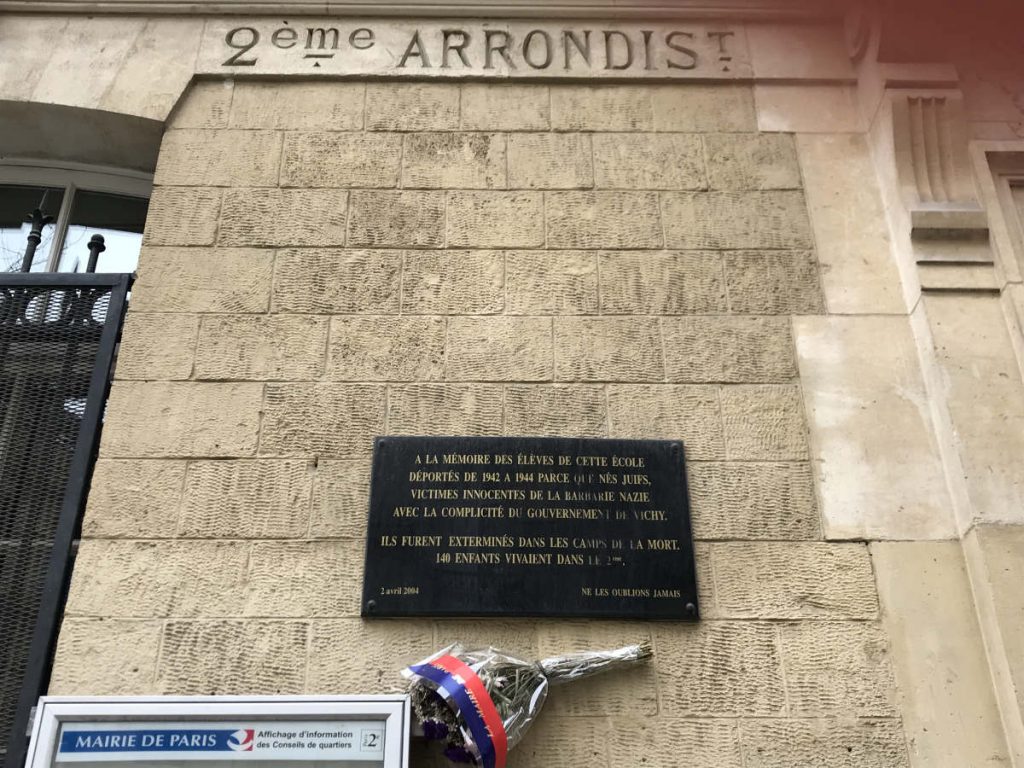
They would be exterminated in death camps. 140 children lived in the 2nd arrondissement.
We will never forget.
All across Paris and the surrounding area you can see plaques outside schools dedicated to the youngest victims.
It would fall to another French General, Charles de Gaulle, exiled in England to rally the French population to form a resistance to defeat the invaders.
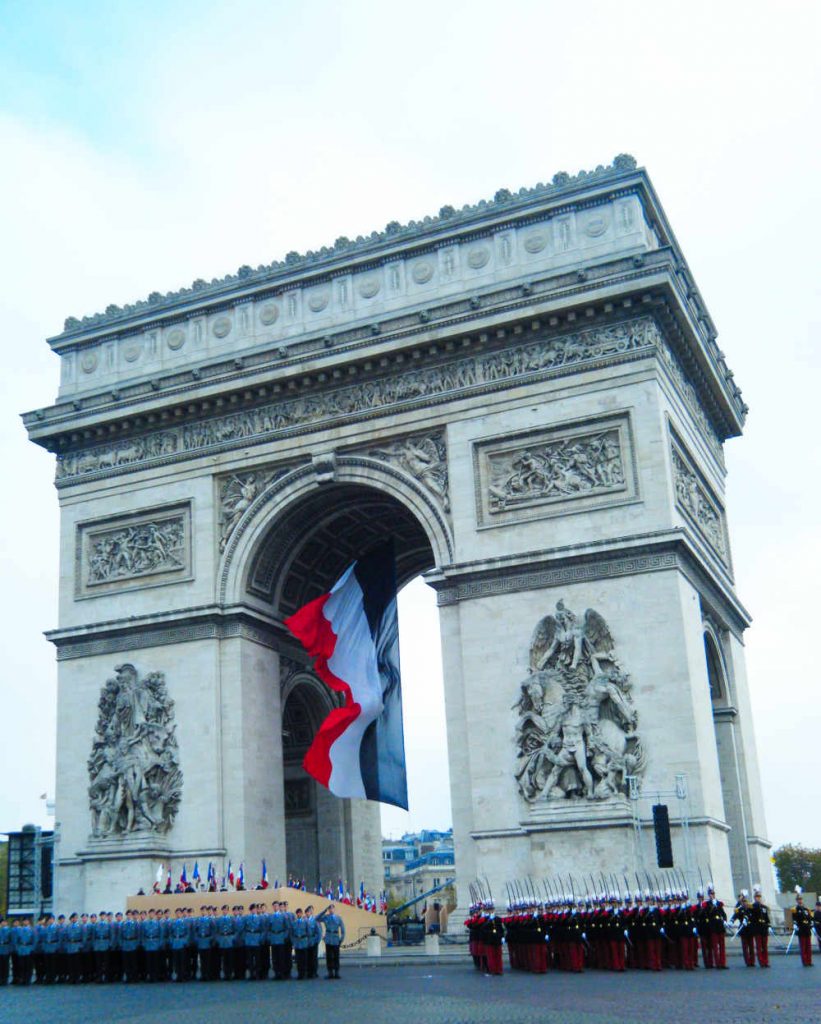
The de facto leader of the French Resistance, General de Gaulle was hailed as a hero after D-Day. Riding on Allied tanks, he was at the liberation of Paris in 1944 after a long and disastrous war suffered by the French.
He would go on to become President, on two different occasions. At last count, Charles de Gaulle has over 3900 streets and monuments named after him in France.
29. France was a founding member of the European Union.
After the 2nd world war ended, the movement was on to reconstitute links with its European neighbors. France became one of the founding members of the Council of Europe in 1949, which was the precursor to the European Union in 1993.
As one of the founding members, the European Union conducts its internal business in three procedural languages: English, French, and German.
30. Loss of colonies and violent social protests.
The era after the war would be known as the Trente Glorieuses, meaning “30 glorious years”, although you would not have known it at the time.
Although the economy recovered, France lost several of its colonies including the Suez Canal, Vietnam and Algeria. France had a large settlement in Algeria, and its refusal to grant independence during the Algerian War of Independence had turned into an enormous crisis.
Algeria was finally given its independence in 1962, unleashing a wave of immigration from the former colony back to France of the Pied-Noir who had supported France. (French football superstar Zinadine Zidane’s parents were part of the pied-noir.)
In addition, WWII hero Charles de Gaulle may have been elected President of France, but this didn’t help him in 1968 however when the country came to a standstill.
Large protests were taking place against the proliferation of capitalism, consumerism, imperialism and all the other ‘isms that you can think of. The students went on strike and then workers joined them. Estimates said approximately 22% of the country had joined the protests. With wildcat strikes and forceful confrontations, the government feared a violent civil war.
Many social reforms and benefits that French people enjoy today, like minimum wages and holidays were established during these protests.
31. The Euro replaced the Franc as legal currency.
On January 1, 1999, France abandoned its old currency, the Franc, and adopted the Euro as its official legal currency as one of the founding members of the Eurozone, with neighbor Germany. The final exchange rate at the time was 6.55957 francs for 1 euro.

If you enjoyed that post, you may like to read more facts about France, and the history of the French royal family. A bientôt!
